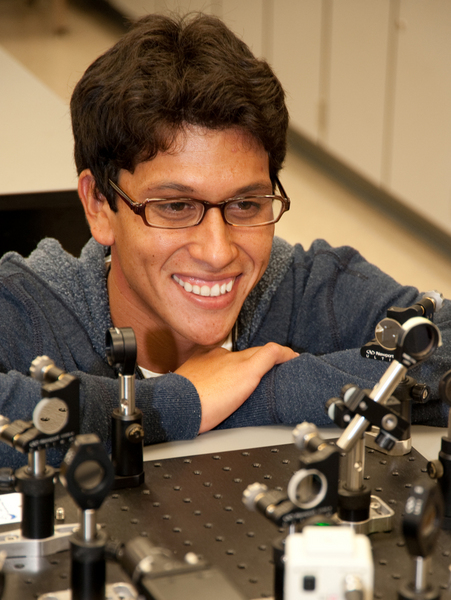
Richard Ordonez was born in New York, but currently resides on O‘ahu. He is entering his senior year this fall, working toward a B.S. in Electrical Engineering at the University of Hawaii at Manoa. Richard was recently employed at the Leeward Community College Observatories, where he conducted astronomy research, maintained a large telescope, and organized community outreach programs. Through his early experience, he has developed a great respect towards astronomy and all of its ideas. In Richard’s future, he would like to help advance space exploration. During his free time he likes to swim, surf, run, ride his bicycle, listen to music, hang out with friends, and stargaze.
Home Island: Mainland
Institution when accepted: University of Hawaii at Manoa
Akamai Project: A Photometric Monitoring Camera for the UH 88-Inch Telescope
Project Site: Institute for Astronomy, Hilo
Mentor: Colin Aspin
Project Abstract:
During astronomical observations of the night sky, weather phenomena, such as clouds or haze, can result in images that are abnormally faint, noisy, or variable. As a result, photometric measurements of a star’s brightness appear dimmer than they should be. Any observational biases due to weather must be identified, so that later photometric corrections can be applied and the intrinsic brightness of the target source can be determined. In order to monitor atmospheric disturbances, I have designed and constructed the University of Hawaii 88-Inch Photometric Monitoring Camera (UH88PMC). The system uses astronomical software to automatically measure photometric changes in stars, and the data is subsequently posted on a website that allows users to track photometric variations in real time. I chose to use a commercial Canon Rebel XSi DSLR camera with an 85-mm, f/1.8 lens, in order to observe a fairly large field of view (roughly 3 ´ 4) while applying a fast focal ratio to quickly image faint objects. I fabricated a lightweight aluminum camera mount, and with the help of the telescope’s day crew, co-aligned the camera on the middle of secondary plate of the 88-Inch Telescope, so that the camera always records a region of the sky encompassing the telescope’s current pointing location. I also assembled a computer from component parts, and it will store the images in a raw digital format to enable subsequent data reduction. This computer is mounted on the bottom of the telescope, but will be accessed remotely from IfA Hilo. In conclusion, the UH88PMC uses an approach that is low-cost, familiar, and beneficial to telescope end-users. Observers will be able to collect real-time data on photometric variations that can later be used to correct their images and photometric measurements.